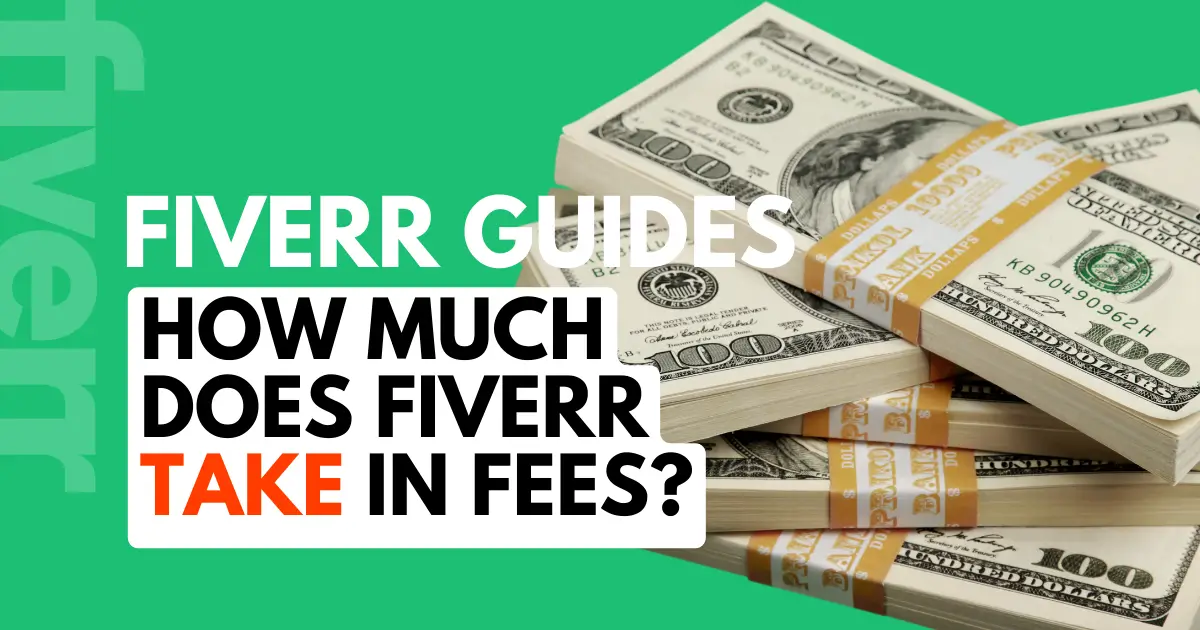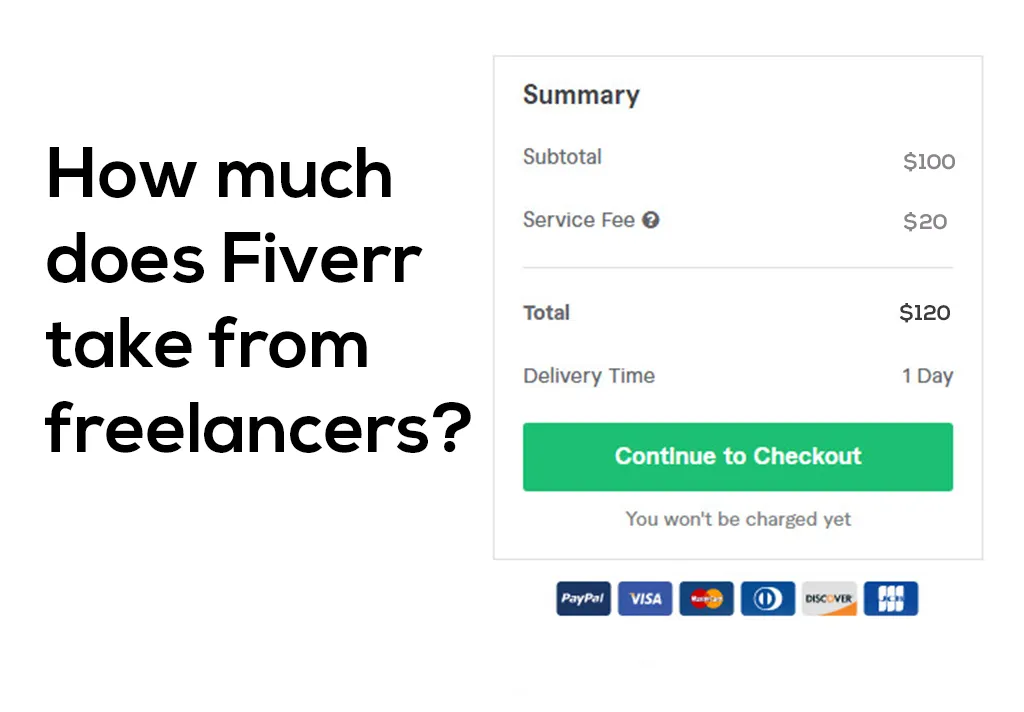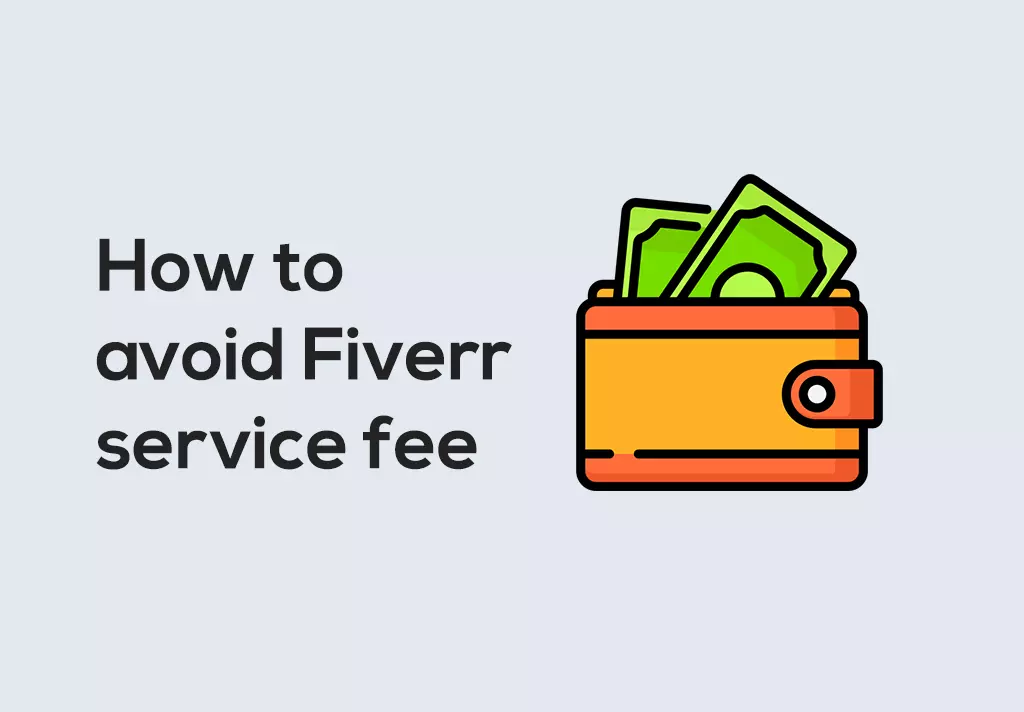When you first step into the world of Fiverr, one of the first things you may notice is the fee structure. Whether you’re a freelancer offering services or a buyer looking for someone to complete a task, understanding Fiverr's fee model is crucial. At first glance, the 20% cut that Fiverr takes may seem steep, but there’s more than meets the eye. In this section, we’ll dive into the reasons behind this fee and what value it brings to both sellers and buyers.
The Breakdown of Fiverr's 20% Fee

Fiverr's 20% fee might raise a few eyebrows, especially if you're just starting out. But let's break it down to understand why this percentage is in place and what it means for everyone involved.
- Platform Maintenance: Operating an online marketplace isn't cheap. Fiverr invests a significant amount into maintaining and improving the platform, which includes keeping the website functional, ensuring user security, and continuously updating the user interface.
- Payment Processing: Whenever a transaction occurs, payment processing companies take a cut. Fiverr handles these transactional complexities, so you can get paid without worrying about where your money is going. Part of that 20% ensures that you receive your funds reliably and on time.
- Marketing and Advertising: Fiverr spends a good chunk of its budget on marketing to attract both buyers and sellers. This advertising helps keep the platform lively and contributes to the number of gigs available. More users generally mean more potential clients for you as a seller.
- Quality Control: Fiverr takes quality seriously. It actively works to maintain a standard for its freelancers. This includes reviewing profiles, service offerings, and buyer feedback—ensuring that clients receive excellent service.
- Dispute Resolution: If things ever go south between a buyer and a seller, Fiverr has systems in place to mediate disputes. This safety net provides assurance for both parties that issues will be handled fairly.
In essence, the 20% fee isn't simply a cost; it supports a robust platform that benefits both freelancers and clients, creating a conducive environment for work and collaboration.
Also Read This: How to Make Money on Fiverr
Comparison with Other Freelance Platforms

When diving into the freelancing world, one of the first questions that pops up is: How do Fiverr's fees stack up against its competitors? Let’s take a closer look at how Fiverr compares to other popular platforms like Upwork, Freelancer, and PeoplePerHour.
| Platform | Service Fee | Minimum Payment |
|---|---|---|
| Fiverr | 20% commission on earnings | $5 |
| Upwork | 10% to 20% based on earnings | $0 |
| Freelancer | 10% to 20% for fixed-price projects | $0 |
| PeoplePerHour | 20% on first £250, then 7.5% | £20 |
As you can see, Fiverr has a straightforward, flat 20% fee, which differs from platforms like Upwork that offer a sliding scale based on lifetime earnings. This means while a freelancer on Fiverr always knows they’ll lose a fifth of their payment, Upwork users could see their fees decrease significantly as they establish longer relationships with clients.
Fiverr sets itself apart by focusing on a unique gig-based system, which might be preferable for those looking for quick jobs rather than long-term contracts. While the fee may seem high compared to some other options, the ease of access to clients and the wide array of services available make Fiverr a favorite for many freelancers.
Also Read This: How to Buy a Gig on Fiverr
Benefits of Using Fiverr Despite the Fees

Now, let’s talk about the real juice—despite the 20% fee structure, what makes Fiverr appealing? Here’s why many freelancers find their niche on this platform:
- Wide Audience Reach: Fiverr attracts millions of buyers from across the globe, which translates into higher visibility for your services.
- Speed and Simplicity: Setting up your gig is straightforward, and it’s easy to start earning quickly without complicated proposals.
- Diverse Categories: Whether you're a graphic designer, writer, or developer, there’s a niche for you on Fiverr. The variety in categories means you can showcase your unique skill set.
- Flexible Payments: With Fiverr, you get paid upfront, which means more security compared to platforms that require invoicing or waiting for client approval.
- Opportunities for Upselling: Once you build a client base, you can upsell additional services or packages, maximizing your earnings over time.
In conclusion, even with the 20% commission, Fiverr provides an attractive set of benefits that can outweigh the costs, especially for those just starting out in the freelancing world. It’s about weighing the pros against the cons, and for many, the ease of finding clients and the potential for income far surpasses the fee.
Also Read This: How to Edit Your Portfolio on Fiverr: A Step-by-Step Guide
How Fiverr's Fees Impact Sellers and Buyers

When diving into the world of Fiverr, one of the first things you'll notice is that Fiverr takes a 20% cut of each transaction. This percentage can significantly impact both sellers and buyers, leading to various feelings and strategies on both sides.
For sellers, this fee structure means they need to price their services strategically. After all, if you're charging $100 for a service, only $80 goes into your pocket after Fiverr takes its share. This can influence how new sellers price their offerings; they might feel pressured to undervalue their work to attract clients, which can lead to a downward spiral of earnings in the long run.
Let’s break it down further:
- Sellers: Many sellers may find themselves needing to raise prices or find other ways to stand out in a crowded marketplace to compensate for the fees. Additionally, they need to account for these fees when calculating their profits and reinvesting in their services.
- Buyers: From a buyer's perspective, the fees are often built into the overall pricing. A buyer paying $100 might not realize $20 is going to Fiverr, but they still want value for their money. This pressure often results in buyers searching for freelancers who offer the highest quality for the standard fee.
The ripple effect of Fiverr's fees creates a delicate balance between sellers needing to earn enough to sustain their business and buyers looking for quality and affordability. Both parties are often navigating this platform with a keen awareness of the fee structure.
Also Read This: How to Level Up on Fiverr
Strategies for Sellers to Maximize Earnings on Fiverr
So, if Fiverr takes a hefty 20% cut, how can sellers maximize their earnings? It’s all about strategy! Here are some effective approaches that can help freelancers thrive on the platform:
- Understand Your Value: First and foremost, assess your skills and understand the value you offer. Don't be afraid to charge what you're worth. Research similar gigs and see where your pricing stands.
- Create Tiered Packages: Offering different service levels can attract various clients. For example, you might have a basic package for a quick service, a standard package for more detailed work, and a premium package for a comprehensive offering. This lets buyers choose based on their budget.
- Enhance Your Profile: Make your Fiverr profile stand out with an eye-catching design, a clear description of your services, and high-quality samples of your work. A professional appearance can significantly increase trust and attract more clients.
- Promote Your Services: Utilize social media, blogs, or even YouTube to market your Fiverr services. The more visibility you create, the more potential clients you can attract.
- Provide Excellent Customer Service: Happy customers often leave positive reviews, which can lead to more business. Always communicate effectively and be open to feedback. A strong reputation can trump the 20% fee as clients flock to reliable sellers.
By applying these strategies, sellers can not only survive but thrive on Fiverr, making the most of their earnings while navigating the platform's fee structure.
Why Does Fiverr Take 20%? Understanding the Platform's Fee Structure
Fiverr is a popular online marketplace that connects freelancers and clients, allowing users to offer and hire services in various fields. However, one of the most frequently asked questions by freelancers is: why does Fiverr take 20% of their earnings? Understanding Fiverr's fee structure is essential to gauge its value to service providers.
Fiverr maintains a comprehensive fee structure that includes various charges. Here’s a breakdown of how the fees work:
| Type of Fee | Percentage |
|---|---|
| Service Fee (Freelancer earns) | 20% |
| Buyer Service Fee | Varies |
Fiverr takes a 20% commission from the earnings of freelancers to cover:
- Platform Development: Continuous improvements to user experience.
- Marketing: Investments to attract more buyers and sellers.
- Security: Ensuring safe transactions and protecting users' data.
- Customer Support: Providing assistance to users whenever necessary.
Moreover, this fee allows Fiverr to maintain the growth of its ecosystem, ensuring that service providers have a steady stream of potential clients.
In conclusion, while Fiverr's 20% fee may seem high at first glance, it covers several essential services that benefit both freelancers and clients. The platform's infrastructure, marketing, and user support contribute to a more efficient and effective marketplace, often making it a worthwhile investment for many freelancers.



